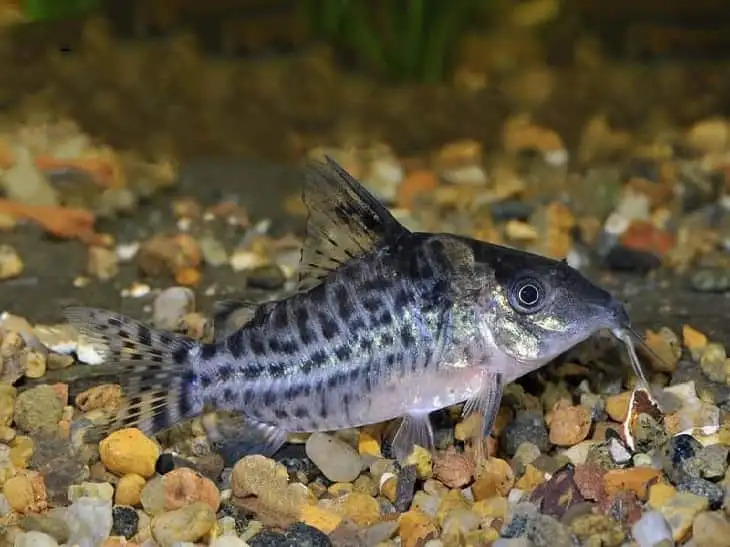Corydoras julii

Coridoras juli or Coridoras leopardi are named after an explorer whose name still remains a mystery. These fish can be found in the wild in the coastal areas of the Amazon river delta in northeastern Brazil. These fish are quite rare to be found commercially.
Corydoras julii has a light grey body with fine black mottling across its surface. Females are larger than males and have a rounded abdomen. The maximum size of the fish is 5-5.5 cm.
An aquarium volume of 60 liters and above is adequate for keeping the fish. Coarse-grained river sand or fine, polished gravel can be used as substrate. Other decoration depends largely on personal choice, but provide shelters where the fish can hide and feel safe.
They are calm, curious fish. Keep them can be a group of 4-6 specimens in a species or general aquarium with other peace-loving fish, preferably occupy the upper layers of water. Leopard Corydoras lead a crepuscular life, hiding in hiding during the day, and active at night. The perimeter of the aquarium can be planted bushes of various plants.
Water parameters: temperature 20-26° C, hardness dH 2-25°, acidity pH 5,5-7,5. Requires quality filtration, increased aeration and a weekly change of 1/3 of the aquarium water with fresh.
The lighting should be low and diffuse. Duration of daylight hours of about 10 hours per day.
Corydoras julii are omnivorous fish. They eat almost all sinking dry, frozen and live food (chironomid, Tubifex, Artemius nauplii, Cyclops, etc.). Try to keep the food as varied as possible. Fish will only take food from the bottom.
Reproduction
Fish reach sexual maturity at the age of one year. Coridoras Juli can be bred in a similar way to other species of coridoras.
For breeding fish in the aquarium there should be 2-3 males per female. Spawning stimulated daily changes of 1/3 of the aquarium water with fresh. When the abdomen of females becomes visibly rounded, make a large (50-70%) replacement of aquarium water with fresh, cooler and increase its aeration. Repeat this daily until the fish begin to spawn.
Females lay eggs on the aquarium glass, among fine foliage or in grottoes.
When spawning is complete, the adults or eggs should be removed. A new aquarium should contain the same water as the spawning one and be just as well oxygenated. Most aquarists add a few drops of methylene blue or one or two alder cones at this point to prevent fungal growth on the eggs.
The eggs incubate usually for 3-4 days, and once the fry have completely used up the nutrients in their yolk sacs, they begin to feed on microworms and artemia nauplii.
The fry require water of excellent quality. It has also been observed that the fry are less susceptible to disease if they are kept on a thin layer of sand and not in an aquarium with no bottom.









